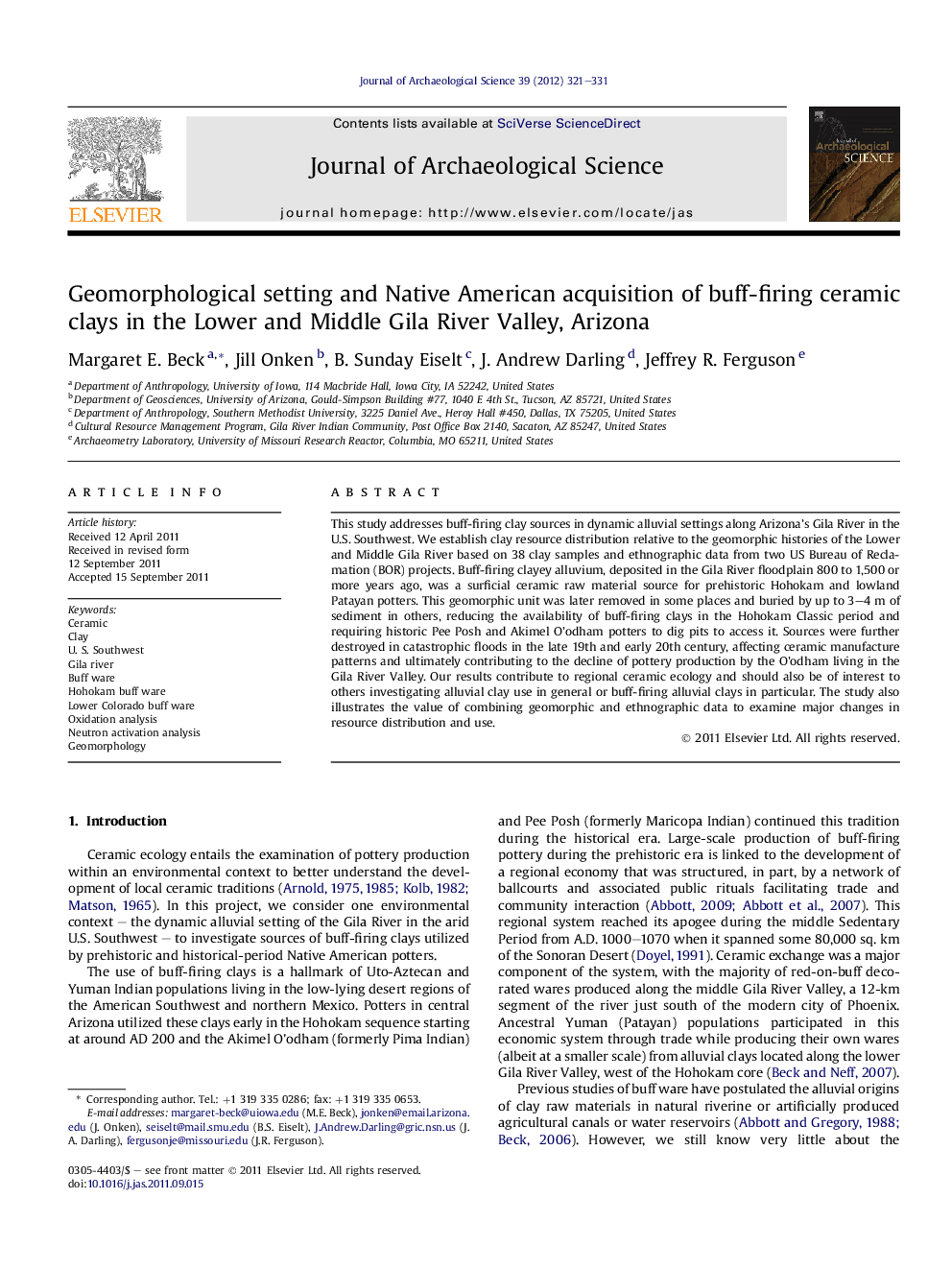| کد مقاله | کد نشریه | سال انتشار | مقاله انگلیسی | نسخه تمام متن |
|---|---|---|---|---|
| 1035886 | 943868 | 2012 | 11 صفحه PDF | دانلود رایگان |

This study addresses buff-firing clay sources in dynamic alluvial settings along Arizona’s Gila River in the U.S. Southwest. We establish clay resource distribution relative to the geomorphic histories of the Lower and Middle Gila River based on 38 clay samples and ethnographic data from two US Bureau of Reclamation (BOR) projects. Buff-firing clayey alluvium, deposited in the Gila River floodplain 800 to 1,500 or more years ago, was a surficial ceramic raw material source for prehistoric Hohokam and lowland Patayan potters. This geomorphic unit was later removed in some places and buried by up to 3–4 m of sediment in others, reducing the availability of buff-firing clays in the Hohokam Classic period and requiring historic Pee Posh and Akimel O’odham potters to dig pits to access it. Sources were further destroyed in catastrophic floods in the late 19th and early 20th century, affecting ceramic manufacture patterns and ultimately contributing to the decline of pottery production by the O’odham living in the Gila River Valley. Our results contribute to regional ceramic ecology and should also be of interest to others investigating alluvial clay use in general or buff-firing alluvial clays in particular. The study also illustrates the value of combining geomorphic and ethnographic data to examine major changes in resource distribution and use.
► Geomorphology and ethnography combined shed light on resource distribution and use.
► Buff-firing clay comes from overbank flood deposits 800 to 1,500 or more years old.
► Access to these deposits changed over time due to changes in the Gila’s flow regime.
► Changing access is associated with changes in regional ceramic production.
Journal: Journal of Archaeological Science - Volume 39, Issue 2, February 2012, Pages 321–331